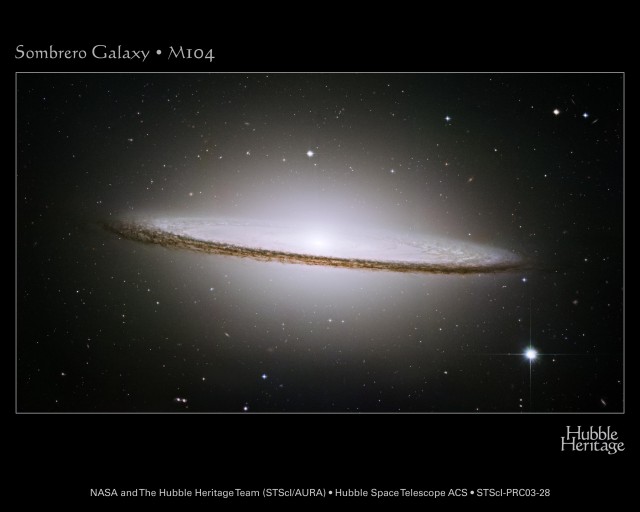Scientists are explorers by nature, and when the edges of their maps are terra incognita, researchers sometimes must give names to phenomena for which we have little knowledge. Sometimes those names linger after we know exactly what an unknown quantity is; X-rays are a classic example. The “X” initially referred to mystery, but by the time physicists determined they were simply a high-energy form of light, the name had stuck.
Dark matter, however, is still a placeholder term. Over the decades since astronomers determined that most of the mass in the cosmos is invisible, researchers have done a much better job of figuring out what dark matter isn’t than what it actually is. We know it must be electrically neutral, and it can’t be made up of ordinary matter (electrons, atomic nuclei, etc.). And while “dark matter” itself is a general term, physicists have a sort of cartography of hints: areas on the map in which various dark matter candidates reside.
The most popular of these realms contains the WIMPs: weakly interacting massive particles. Like the term “dark matter," WIMP is generic: the name describes the energy scale at which these hypothetical particles interact with ordinary matter, which in turn reveals something about their mass.
WIMPs have an advantage from a theoretical standpoint in that particle physicists have some idea of how they could have been created in the first moments after the Big Bang. Beyond that, though, multiple theories can produce particles that look like WIMPs, including versions of supersymmetry (SUSY). For that reason, the majority of dark matter experiments are looking for WIMPs, and in most discussions when we say “dark matter,” we really mean “WIMP.”
But WIMPs aren’t the only spot on the map that looks promising. In fact, the failure of dark matter experiments to find any particles so far could mean we should look to other locales. For example, if you read older accounts of dark matter studies, you’ll likely see two non-WIMP possibilities mentioned: MAssive Compact Halo Objects (MACHOs, another “clever” acronym) and miniature black holes created in the first moments after the Big Bang.
If the case for WIMPs looks a little shaky, the arguments for these possibilities look even worse. MACHOs such as brown dwarfs do exist, but observations indicate they comprise no more than 20 percent of the galactic halo mass. Similarly, even tiny black holes would leave a cumulative gravitational signature, which we simply don’t see. The map in these areas is clear: while MACHOs and tiny black holes may exist, they simply aren’t numerous enough to be dark matter.
That brings us back to the most likely possibility: dark matter is made of particles of one or more unknown types. That still leaves us with many candidates, ranging from the (relatively) mundane to the very speculative. The following is a look at a few of these, but the map still has many blank spaces—it's nearly impossible to be comprehensive at this point.
Galaxies don't like it hot
Most of the matter described by the Standard Model of particles and their interactions isn't an option for dark matter. But there’s one known particle left that seems to fit the description: neutrinos. These are very common particles, created in a wide number of fusion and fission reactions. Neutrinos are invisible to all forms of light and barely interact with electrons and atomic nuclei, mainly because they are electrically neutral.
From a dark matter perspective, however, there's a problem: they are also very low-mass—less than one thousandth of an electron mass. That means, numerous as they are, neutrinos don’t have the numbers to be dark matter. (There’s still a small amount of wiggle room for a higher-mass “sterile” neutrino.)

In fact, most very low-mass particles are poor dark matter candidates. Collectively, they're known as “hot dark matter” (HDM), as their low mass ensures that they move very close to the speed of light with the slightest input of energy, and their lack of electric charge means they are hard to slow down once they're moving. For that reason, HDM doesn’t aggregate very well: instead of making the nice galactic halos where we know dark matter lives, the particles would have streamed away from galaxies as they formed. If too much matter is in the form of high-velocity particles, galaxies and galaxy clusters can’t form at all. For that reason, HDM is no longer considered a viable model.
WIMPs, by contrast, are “cold dark matter” (CDM), meaning they move sluggishly and can collect into galactic halos just fine. A typical WIMP model predicts dark matter particles to be at least 40 times the mass of a proton, possibly up to roughly a hundred thousand times greater—nicely explaining the “massive particle” part of the name. Similarly, the “weakly interacting” bit is a reference to the energy at which hypothetical dark matter particles interact with ordinary matter and each other. Neutrinos and their ilk pass the “WIP” part but not the “M.”
The middle ground between hot and cold, as you might guess, is “warm dark matter” or WDM. Hypothetical WDM particles could have masses starting at about a hundredth of an electron mass: much heavier than neutrinos but far lighter than any particle of ordinary matter. (Protons and neutrons are about 2,000 times more massive than electrons.) As such, they would move more slowly than HDM and could clump up into galactic halos.
Some astronomers are fond of the WDM idea because it could help resolve some problems in understanding the structure of galaxies. The simplest CDM models predict various galactic properties that are at odds with observations—the number and distribution of satellite galaxies, for example—and WDM might solve these issues. The problems are complicated, as with anything involving galaxies, so it’s premature to say CDM can’t do the trick. However, the WDM and CDM models predict many differences we could observe through astronomy.
Distinctions between the two options on the physics side are of potential concern, though. WIMPs, in whichever theory you prefer, are known as “thermal relics”—they were created in the high temperatures during the Universe’s earliest moments and have survived unchanged since. WDM particles would have to be made more recently, either by decaying from unstable WIMPs (an option known weirdly as “super-WIMPs”) or some other mechanism. They are not thermal relics.
Additionally, WDM is unlikely to interact with ordinary matter through any force other than gravity. That, combined with the particles' low mass, makes it very hard to detect directly.
Dark forces
So far, we’ve focused on the simplest dark matter models, consisting of one type of object and minimal interactions among individual dark matter particles. However, that’s not how ordinary matter behaves: the interactions among different particle types enable the existence of atoms, molecules, and us. Maybe the same sort of thing is true for dark matter, which could be subject to new forces acting primarily between particles.
Some theories describe a kind of “dark electromagnetism” where particles carry charges like electricity, but they're governed by a force that doesn’t influence electrons and the like. Just as normal electromagnetism describes light, these models include “dark photons,” which sound like something from the last season of Star Trek: The Next Generation (after the writers ran out of ideas).
Like many WDM candidates, dark photons would be difficult—if not impossible—to detect directly, but if they exist, they would carry energy away from interacting dark matter systems. That would be detectable by its effect on things like the structure of neutron stars and other compact astronomical bodies. Observations of these objects would let researchers place some stringent limits on the strength of dark forces. Another consequence is that dark forces would tend to turn spherical galactic halos into flatter, more disk-like structures. Since we don’t see that in real galaxies, there are strong constraints on how much dark forces can affect dark matter motion.
Another side effect of dark forces is that there should be dark antimatter and dark matter-antimatter annihilation. The results of such interactions could include ordinary photons, another intriguing hint in the wake of observations of excess gamma-rays, possibly due to dark matter annihilation in the Milky Way and other galaxies.
What's cooler than cold dark matter?
While most low-mass particles are “hot,” a hypothetical particle known as the axion is an exception. Axions were first predicted as a solution to a thorny problem in the physics of the strong nuclear force, but certain properties make them appealing as dark matter candidates. Mainly, they are electrically neutral and don’t interact directly with ordinary matter except through gravity.
Axions are also very low-mass (at least in one proposed version), but unlike hot dark matter, they “condensed” in the early Universe into a slow, thick soup. In other words, they behave much like cold dark matter, but without the large mass usually implied by the term.
Axions aren’t part of the Standard Model, but in a sense they’re a minimally invasive addition. Unlike supersymmetry, which involves adding one particle for each type in the Standard Model, axions are just one particle type, albeit one with some unique properties. (To be fair, these aren’t mutually exclusive concepts: it’s possible both SUSY particles and axions are real, and some versions of SUSY even include a hypothetical partner for axions.)
Like WDM, axions don’t interact directly with ordinary matter. But according to theory, in a strong magnetic field, axions and photons can oscillate into each other, switching smoothly between particle types. That means axions could be created all the time near black holes, neutron stars, or other places with intense magnetic fields—possibly including superconducting circuits here on Earth. This is how experiments hunt for axions, most notably the Axion Dark Matter eXperiment (ADMX) .
So far, no experiment has turned up axions, at least of the type we'd expect to see. Particle physics has a lot of wiggle-room for possibilities, so it’s too soon to say no axions exist, but axion partisans are disappointed. A universe with axions makes more sense than one without, but it wouldn’t be the first time something that really seemed to be a good idea didn’t quite work out.
A physicist's fear
Long as it is becoming, this list is far from complete. We've excluded exotic particles with sufficiently tiny electric charges to be nearly invisible, weird (but unlikely) interactions that change the character of known particles under special circumstances, plus a number of other possibilities. One interesting candidate is jokingly known a WIMPzilla, which consists of one or more particle type more than a trillion times the mass of a proton. These would have been born at a much earlier era than WIMPs, when the Universe was even hotter. Because they are so much heavier, WIMPzillas can be rarer and interact more readily with normal matter, but—as with other more exotic candidates—they aren't really considered to be a strong possibility.
And more non-WIMP dark matter candidates seem to crop up every year, though many are implausible enough they won’t garner much attention even from other theorists. However, each guess—even unlikely ones—can help us understand what dark matter can be, and what it can't.
We've also omitted a whole other can of worms known as “modified gravity”—a proposition that the matter we see is all there is, and the observational phenomena that don't make sense can be explained by a different theory of gravity. So far, no modified gravity model has reproduced all the observed phenomena attributed to dark matter, though of course that doesn’t say it can never happen.
To put it another way: most astronomers and cosmologists accept that dark matter exists because it’s the simplest explanation that accounts for all the observational data. If you want a more grumpy description, you could say that dark matter is the worst idea, except for all the other options.
Of course, Nature is sly. Perhaps more than one of these dark matter candidates is out there. A world with both axions and WIMPs—motivated as they are by different problems arising from the Standard Model—would be confounding but not beyond reason. Given the unexpected zoo of normal particles discovered in the 20th century, maybe we'll be pleasantly surprised; after all, wouldn't it be nice if several of our hypotheses were simultaneously correct for once? (I'm a both/and kind of guy.) More than one type might also help explain why we have yet to see any dark matter in our detectors so far. If a substantial fraction of dark matter particles is made of axions, then the density of WIMPs or WDM must be correspondingly lower and vice versa.
But a bigger worry lurks in the minds of many researchers. Maybe dark matter doesn’t interact with ordinary matter at all, and it doesn’t annihilate in a way we can detect easily. Then the “dark sector” is removed from anything we can probe experimentally, and that’s an upsetting thought. Researchers would have a hard time explaining how such particles came to be after the Big Bang, but worse: without a way to study their properties in the lab, we would be stuck with the kind of phenomenology we have now. Dark matter would be perpetually assigned to placeholder status.
In old maps made by European cartographers, distant lands were sometimes shown populated by monstrous beings. Today of course, everyone knows that those lands are inhabited by other human beings and creatures that, while sometimes strange, aren't the monsters of our imagination. Our hope is that the monstrous beings of our theoretical space imaginings will some day seem ordinary, too, and “dark matter” will be part of physics as we know it.
Matthew is a physicist, science writer, former college professor, ex-planetarium director, occasional musician, and frequent wearer of jaunty hats. His research is in cosmology, gravitational physics, and nonlinear phenomena, but he'll write about pretty much anything (which is what being a college professor does to you). He did his Ph.D. work in physics and astronomy at Rutgers University in New Jersey, and he currently lives in Virginia. He thinks topology and Python programming should be taught in elementary school.




Spread the word